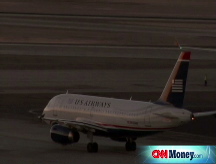Oil rises on expected OPEC cut
Prices rebound from 16-month low as investors anticipate the cartel will slash production to cope with falling prices.

NEW YORK (CNNMoney.com) -- Oil prices rebounded from a 16-month low Thursday as many investors anticipated a large production cut from OPEC at its emergency to deal with falling demand in the slowing economy.
U.S. crude for December delivery settled up $1.09 to $67.84 a barrel in electronic trading, rebounding from a settlement of $66.75 a barrel the day before, the lowest close since June 2007.
Oil fell $5.43 on Wednesday after the Energy Department revealed a larger-than-expected increase in crude inventories - a sign that demand for crude in the United States, the world's largest oil consumer, was low.
Possible OPEC cut: The Organization of Petroleum Exporting Countries, whose member nations control about 40% of the world's oil, pushed up an emergency meeting, originally scheduled for Nov. 18, to Friday as slowing demand sent crude oil prices plummeting.
Falling demand has helped drive oil prices down more than 50% since they rose to a record high of $147.27 a barrel in mid-July, which has alarmed many of the nations whose economies depend on oil exports.
"I think (non-OPEC) Russia's desperate, and it's breakeven for (Venezuelan president Hugo) Chavez," said Tom Orr, head of research for Weeden & Co. in Connecticut.
"On the one hand, they want the price of oil up, but they don't want to be the ones to have to trim a lot of production," said Orr.
Russia, which is not an OPEC member, attends the organization's meetings as an observer.
OPEC officials have expressed concern that record high oil prices, followed by global economic stagnation, may have permanently impaired demand for crude products.
OPEC president Chakib Khelil told reporters last weekend that any production cut could be "substantial," adding that the organization would try to stabilize prices between $70 and $90 a barrel.
Iran's oil minister, Gholamhossein Nozari, told reporters Thursday that OPEC needed to cut production by about 2 million barrels a day.
Because the higher viscosity and sulfur content of Iranian oil makes it less desirable to refiners than oil from other OPEC nations, such as Saudi Arabia, the country has tended to try and keep overall prices higher.
However, analysts were split on the long-term benefits of a large OPEC cut.
Too large a cut, with the global economy already strained, could cause consumption to fall further, since oil would be harder to obtain, according to Phil Flynn, senior market analyst with Alaron Trading in Chicago.
"If they (OPEC) overreact to this selloff in the price of oil, it could hurt them more than it helps them," said Flynn.
If OPEC cuts too much, it could "destroy businesses, kill the economic growth in China," added Flynn. "They have to send a message to the market that they realize that the global economy has to heal right now."
On the other hand, a cut of about 2 million barrels a day could lend some stability to the oil markets, according to Orr.
"I think that's what the market needs," said Orr.
"By the end of the day, I think (a cut of) 2 million will probably be priced into the market," he added.
Gasoline: As belts get tighter, energy spending is often one of the first things consumers and businesses cut back on.
In the U.S., gasoline prices have fallen from a high of $4.114 a gallon on average since July, according to motorist group AAA. By Thursday, the average U.S. price had fallen to $2.822 a gallon, AAA said.
But despite the fall in prices, gas caps remained tight as Americans became used to using less.
According to the Energy Department, gasoline consumption for the last four weeks averaged 8.8 million barrels a day, or 4.3% lower than the same period last year.
And last week, gasoline demand was down 6.4% compared to the same week a year ago, according to a MasterCard survey of credit card swipes. It was the 26th consecutive week in which gasoline demand had declined on a year-over-year basis. ![]()




